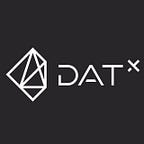[DATx Digital Advertising Mini Class] Week 1: Introduction to Digital Advertising
If you’re reading this online, you’re undoubtedly familiar with online ads. But have you ever thought about the mechanism behind how these ads appear on the sites you visit?
This week, we’ll explore the digital advertising ecosystem works and its key players.
There are three main parties involved in the digital advertising ecosystem: internet users, advertisers, and publishers.
Internet users are the everyday people who go online to connect with friends, read the news, be entertained, etc. They are the audience advertisers want to reach and the consumers of publisher content and services.
Advertisers, as in traditional advertising, want to reach out to potential customers. They create ads and pay publishers to host these ads online.
Publishers host content and services for internet users. Publishers can range from small independent news websites to large companies like Google and Facebook. They attract traffic to their sites, providing a platform for advertisers to place their ads to reach audiences.
How are these three parties connected? The digital advertising ecosystem consists of a complex network of DSPs, SSPs, ad networks, ad exchanges, and more. The primary objective of the ecosystem is to effectively place advertiser’s ads onto websites to reach consumers. Let’s look at the major platforms and technologies/terminologies involved:
Ad Impressions are when an ad is fetched from its source and displayed to a visitor on a web page’s ad space. It doesn’t take into account whether or not there was engagement with the ad. The per impression pricing model is the most common model in the industry, but there are also a few others that take into account engagement.
Programmatic Advertising simply put, is automated ad buying. Utilizing optimized algorithms, advertisers are able to purchase ad space without needing to manually select options or negotiate.
Real-Time Bidding is a type of programmatic advertising. It entails ads being sold on a per impression basis through programmatic auction basis.
Ad Networks are media companies that sell inventory of different publisher sites’ ad space to advertisers at a set price. They work directly with publishers to sell ad space that a publisher hasn’t directly sold.
Ad Exchanges are platforms that allow publishers and ad networks to sell ad space to advertisers directly. As an online auction for ads, ad exchanges work with multiple seller sources to simultaneously auction off ad space through real-time bidding or programmatically. Often, they connect to DSPs and SSPs, but advertisers can buy directly from ad exchanges.
DSP stands for demand side platform. It allows advertisers to automate the purchase of online advertising by connecting to and managing multiple ad exchanges and SSPs through one interface. This helps advertisers get the best price for ad placements.
SSP stands for supply side platform, and is the publisher equivalent of a DSP. It allows publishers to automate the sales of online advertising. SSPs connect web publishers to multiple ad exchanges, DSPs, and ad networks at once to sell their inventory. This helps publishers to get the best price for their ad space.
DMP stands for data management platform. It operates as a data warehouse for the advertisers, storing web traffic information, usually gathered from cookies. DMPs analyze this data to help advertisers target their desired audiences on DSPs. Increasingly, publishers are using this technology to analyze their website viewership. However, without being linked to other technology like DSPs, it can’t do much on its own.
How does it all link together? Publishers sell their ad space either through an SSP, ad network, or ad exchange. Advertisers buy these ad spaces, usually on a per impression basis, through a DSP or on ad exchanges and networks. With current programmatic advertising technology and DMPs supplying information for targeting, all of this purchasing and selling can be automated. This allows for advertisers to reach audiences on a wide variety of websites and platforms at higher speeds and higher precision than traditional advertising.
Image source: Luma Partners LLC
Where does DATx fit in all of this? Despite the digital advertising ecosystem running on internet user data, internet users miss out on all the revenue generated by the ecosystem. In addition, while programmatic advertising brings automation to the ecosystem, lower quality ads persist because of the lack of access to comprehensive user data. The user information they have access to is fragmented, as large platforms silo off user behavior on their own sites in centralized, walled-off storages.
To alleviate these issues, DATx will establish an incentivized ecosystem where users are rewarded in token for sharing their user data, which will help create more comprehensive user profiles to increase the precision of targeting by advertisers and publishers. As a platform, DATx is able to provide all platforms in the current ecosystem better data more ethically.
